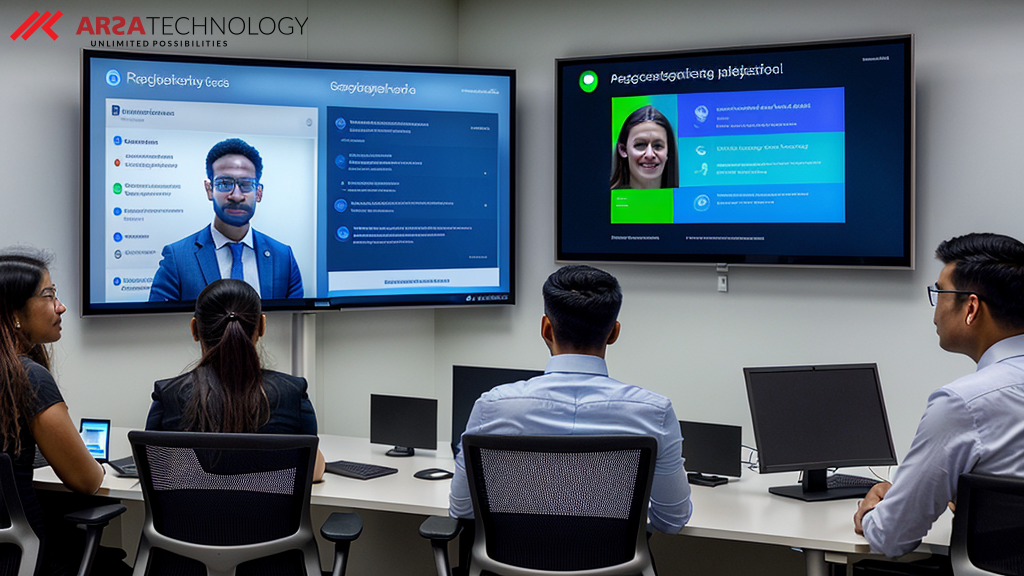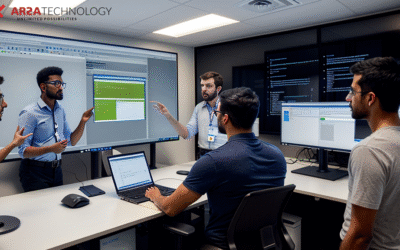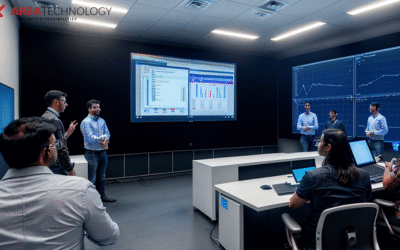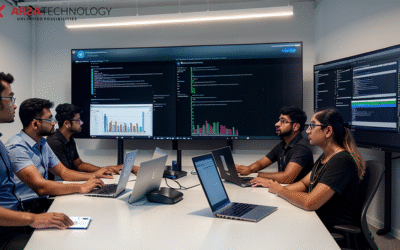Introduction: Overcoming the Need for Multilingual Public Service Access in Government
Government agencies worldwide face the complex challenge of providing equitable and efficient services to increasingly diverse, multilingual populations. This challenge is particularly acute in critical sectors like education, where accurate student attendance tracking is vital for resource allocation, academic support, and overall institutional accountability. Traditional methods often struggle to accommodate linguistic diversity, leading to communication barriers, administrative inefficiencies, and potential exclusion for segments of the community. ARSA Technology understands these intricate demands. We offer advanced AI API products designed to empower government solutions, enabling seamless, secure, and universally accessible public services. Our Face Recognition API stands out as a foundational technology for addressing the core pain point of multilingual access, especially when integrated into systems like student attendance tracking.
This article explores how developers and solutions architects can leverage ARSA Technology’s Face Recognition API to build robust government applications that not only streamline operations but also foster inclusivity by transcending language barriers. We’ll delve into the strategic advantages of biometric identity verification in public service, focusing on its transformative impact on student attendance and broader citizen engagement.
The Evolving Landscape of Government Service Delivery
Modern governance demands agility, transparency, and accessibility. Citizens expect digital services that are intuitive and responsive, regardless of their native language. For government entities, this translates into a pressing need for infrastructure that can support a multitude of languages without compromising on security or efficiency. Manual processes, paper-based forms, and even basic digital interfaces often create friction for non-native speakers, leading to delays, errors, and a diminished public experience.
In the educational sector, this manifests as difficulties in verifying student identities for attendance, managing records, and ensuring that all students, regardless of linguistic background, can seamlessly participate in the system. The administrative burden of managing diverse linguistic needs through traditional means can be overwhelming, diverting valuable resources from core educational objectives. ARSA Technology’s approach offers a powerful alternative, enabling governments to build solutions that are inherently language-agnostic at their core, while providing a flexible framework for localized user experiences.
Revolutionizing Student Attendance Tracking with Biometric Precision
Student attendance tracking is more than just a bureaucratic task; it’s a cornerstone of educational success and resource management. Accurate attendance data informs funding, identifies at-risk students, and ensures compliance with educational mandates. However, traditional methods—roll calls, sign-in sheets, or even RFID cards—are prone to errors, time-consuming, and susceptible to manipulation. In diverse communities, these methods can also be cumbersome for students or parents who may face language barriers when interacting with school staff or systems.
ARSA Technology’s Face Recognition API offers a paradigm shift. By using facial biometrics, educational institutions can implement a highly accurate, secure, and efficient attendance system. Students simply present their face to a camera, and the system instantly verifies their identity against a secure database, marking their attendance. This process is universal, requiring no language interpretation, making it ideal for multilingual environments. It eliminates the need for physical cards or personal identifiers that can be lost or shared, significantly reducing fraud and enhancing data integrity. This not only streamlines daily operations but also provides reliable data for critical decision-making, ensuring that every student is accounted for and supported.
ARSA Technology’s Face Recognition API: A Foundation for Trust and Efficiency
At the heart of this transformation is ARSA Technology’s robust Face Recognition API. Engineered for high performance and accuracy, it provides a reliable mechanism for identity verification. The API allows developers to integrate powerful facial recognition capabilities into their applications, enabling tasks such as enrolling new users, verifying existing identities, and identifying individuals from a database. This forms the bedrock for secure identity verification solutions across various government applications.
For student attendance, the process is straightforward: students are enrolled once by capturing their facial biometric data, which is then securely stored. Subsequently, for attendance verification, their live facial image is captured and compared against the enrolled data. The API’s sophisticated algorithms ensure rapid and precise matching, confirming identity in real-time. This entirely bypasses language-dependent interfaces during the core verification step, making the process universally accessible. To see the API in action, try our interactive demo on RapidAPI. This playground allows developers and architects to directly experience the API’s capabilities and understand its potential without needing to write any code.
Addressing Multilingual Access Through Seamless Integration
The inherent nature of biometric verification, particularly facial recognition, is its language independence. Unlike text-based forms or voice commands, a face scan requires no linguistic interpretation from the user. This makes it an ideal core component for government services aiming for universal access. When integrated via an SDK, the Face Recognition API allows developers to build the user-facing application layer with full localization support. This means the prompts, instructions, and feedback presented to the user can be displayed in their preferred language, while the underlying biometric verification remains consistent and language-agnostic.
For example, a student attendance kiosk could display instructions in English, Spanish, Mandarin, or any other local language, while the facial scan itself remains the universal method of identification. This dual approach ensures that the critical function of identity verification is universally accessible, while the user experience is tailored to individual linguistic needs. The result is a more inclusive public service, where citizens from all linguistic backgrounds can engage with government systems with dignity and ease, fostering greater trust and participation.
Beyond Attendance: Expanding the Horizon of Government Applications
While student attendance tracking is a compelling initial application, the capabilities of ARSA Technology’s Face Recognition API extend far beyond. Its core function of secure identity verification can be applied to a myriad of government services, significantly enhancing efficiency and security. Imagine secure access to government buildings, streamlined citizen registration for public benefits, or even identity confirmation for voting processes.
Furthermore, integrating Face Recognition with other advanced AI capabilities, such as preventing fraud with liveness detection, can create an even more robust security posture. Liveness detection ensures that the presented face is from a live person and not a spoofing attempt using photos, videos, or masks. This layered security is crucial for high-stakes government applications where identity fraud could have severe consequences. By combining these powerful tools, government agencies can build comprehensive, future-proof solutions that protect citizens and resources.
Strategic Advantages for Government Agencies and Developers
Implementing ARSA Technology’s Face Recognition API offers significant strategic advantages for both government agencies and the developers building these solutions.
For Government Agencies:
* Enhanced Efficiency: Automating attendance tracking and identity verification frees up administrative staff to focus on more critical tasks, leading to substantial operational cost savings.
* Improved Accuracy: Biometric verification virtually eliminates human error and proxy attendance, providing highly reliable data for reporting and decision-making.
* Boosted Security: A robust, fraud-resistant identity verification system protects sensitive data and ensures that services are delivered to the rightful individuals.
* Greater Accessibility & Inclusivity: Language-agnostic biometric verification combined with localized interfaces ensures that public services are accessible to all citizens, fostering trust and engagement.
* Scalability: The API infrastructure is designed to handle large volumes of transactions, making it suitable for city-wide or national deployments.
For Developers and Solutions Architects:
* Accelerated Development: The API approach abstracts complex biometric algorithms, allowing developers to integrate powerful capabilities without deep expertise in machine learning.
* Robust Performance: ARSA’s APIs are built for high performance and reliability, ensuring that integrated solutions meet the demanding requirements of government applications.
* Focus on User Experience: Developers can concentrate on building intuitive, localized front-end applications that cater to diverse user needs, knowing that the backend identity verification is handled by a world-class API.
* Future-Proofing: Leveraging a cutting-edge AI platform ensures that solutions remain relevant and adaptable to evolving technological landscapes and citizen expectations.
Implementing ARSA’s Face Recognition API: A Phased Approach
Integrating ARSA Technology’s Face Recognition API into government solutions, such as a student attendance system, follows a logical, phased approach. While we avoid specific code examples, understanding the conceptual steps is crucial for planning.
1. Needs Assessment and Planning: Identify the specific points within your existing or new system where facial recognition will be applied. Define user flows, data privacy requirements, and compliance standards.
2. Architectural Design: Determine how the Face Recognition API will fit into your overall system architecture. This involves planning data storage for biometric templates (securely, according to regulations) and designing the interaction between your application’s front-end and the API.
3. SDK Integration Strategy: Plan how your development team will utilize the API’s capabilities. While we don’t provide code here, the API is designed for straightforward integration, allowing your team to focus on building the user interface and business logic.
4. User Interface Development: Design and develop the user interface for capturing facial images and displaying feedback. Crucially, this is where multilingual support is implemented, ensuring prompts and messages are available in various languages.
5. Testing and Validation: Rigorously test the integrated solution for accuracy, speed, security, and user experience across diverse demographics and lighting conditions. Ensure compliance with all relevant data protection and privacy regulations.
6. Deployment and Monitoring: Deploy the solution and establish monitoring protocols to track performance, identify any issues, and ensure continuous operation.
For initial exploration and understanding the API’s functionality firsthand, remember to try our interactive demo on RapidAPI. This allows for practical experimentation with the API’s capabilities before committing to full-scale development.
Conclusion: Your Next Step Towards a Solution
The demand for accessible, efficient, and secure public services is growing, and government agencies must innovate to meet these expectations. ARSA Technology’s Face Recognition API provides a powerful, language-agnostic solution to critical challenges like student attendance tracking and the broader need for multilingual public service access. By integrating this advanced biometric technology, governments can enhance operational efficiency, bolster security, and most importantly, foster a more inclusive environment for all citizens.
Embrace the future of government service delivery. ARSA Technology is committed to empowering developers and agencies with the tools needed to build smarter, more accessible, and more secure solutions.
Ready to Solve Your Challenges with AI?
Discover how ARSA Technology can help you overcome your toughest business challenges. Get in touch with our team for a personalized demo and a free API trial.







